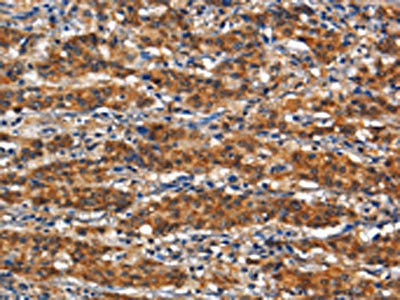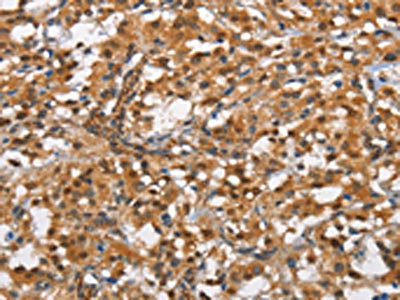
The image on the left is immunohistochemistry of paraffin-embedded Human gastic cancer tissue using CSB-PA969898(ANPEP Antibody) at dilution 1/80, on the right is treated with synthetic peptide. (Original magnification: x200)
ANPEP Antibody

CSB-PA969898
ApplicationsELISA, ImmunoHistoChemistry
Product group Antibodies
ReactivityHuman
TargetANPEP
Overview
- SupplierCusabio
- Product NameANPEP Antibody
- Delivery Days Customer20
- ApplicationsELISA, ImmunoHistoChemistry
- CertificationResearch Use Only
- ClonalityPolyclonal
- ConjugateUnconjugated
- Gene ID290
- Target nameANPEP
- Target descriptionalanyl aminopeptidase, membrane
- Target synonymsalanyl (membrane) aminopeptidase; aminopeptidase M; aminopeptidase N; AP-M; APN; AP-N; CD13; GP150; hAPN; LAP1; membrane alanyl aminopeptidase; microsomal aminopeptidase; myeloid plasma membrane glycoprotein CD13; P150; PEPN
- HostRabbit
- IsotypeIgG
- Protein IDP15144
- Protein NameAminopeptidase N
- Scientific DescriptionAminopeptidase N is located in the small-intestinal and renal microvillar membrane, and also in other plasma membranes. In the small intestine aminopeptidase N plays a role in the final digestion of peptides generated from hydrolysis of proteins by gastric and pancreatic proteases. Its function in proximal tubular epithelial cells and other cell types is less clear. The large extracellular carboxyterminal domain contains a pentapeptide consensus sequence characteristic of members of the zinc-binding metalloproteinase superfamily. Sequence comparisons with known enzymes of this class showed that CD13 and aminopeptidase N are identical. The latter enzyme was thought to be involved in the metabolism of regulatory peptides by diverse cell types, including small intestinal and renal tubular epithelial cells, macrophages, granulocytes, and synaptic membranes from the CNS.
- ReactivityHuman
- Storage Instruction-20°C or -80°C
- UNSPSC12352203

